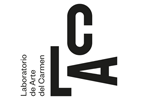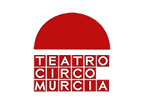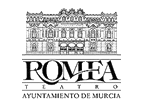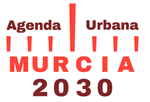Old Prison Project
Old Prison Project
Recovering the Old Prison as a public space.
The Governing Board assigns the rehabilitation and commissioning works for phase 1, which have already begun. The City Council is working in parallel on the development of a project that will be developed in Torre de la Marquesa street and that will involve the extension of the pavement adjacent to the building, providing the space with a large pedestrian and landscaped area.
Thanks to this action, a key piece of heritage will be returned to Murcia, converted into a new bright, open and participatory meeting point, which will host permanent activity, without physical, time or generational barriers.Likewise, the Committee of Experts on Cultural Matters convened to study the different uses of this property has defined the Old Prison as a "multi-purpose cultural emblem".
According to the minutes of the conclusions of the meetings of this team of experts "the agreement is unanimous when considering that the architectural and spatial structure of the building (cross plan, with large adjacent courtyards), its uniqueness and its history, demand the fusion of influences and cultures, that it open in nature, and not specialised in a specific discipline “. To this purpose, it is established that “this public space should not be confined to rigid uses, but must be defined with a flexible character, open to any influence or future trends in cultural and avant-garde matters".
They also advise of their interest in"keeping the cells on the ground floor of the East module, with an area of 196.5 m2, in order not to lose the memory of what the interior of the building was in its entirety and provide a multitude of spaces of different dimensions and possibilities , creating a wealth of space and uses”.
Experts estimate that the adjacent patios can be used as terraces, for projections or cultural events during summers. "It would be about creating a cultural and multipurpose‘mall', a fusion of leisure and culture, without specialising in a specific discipline”, the conclusions indicate.
They also propose to keep the planned auditorium, as its expansion is architecturally unviable. Likewise, they indicated the need to enable entry and side waiting spaces, in order to directly access the auditorium area. In this sense, it is stated that the posterior access to the auditorium through a perimeter hall is essential for its operation.
The central area of the panopticon must be open, bright and flexible. This space is also considered as multipurpose, being able to host various activities at the same time as it is configured as the core of the project's flows.
Intervention in more than 1,300 square metres
The final project for 'Rehabilitation and implementation of Phase I of the Old Provincial Prison of Murcia' prepared by IH Arquitectos, winners of the 'Ethereal Walls' competition of public ideas, foresees an intervention that will allow the rehabilitation of a 1,321 square metre are, distributed in 642 m2 on the ground floor and 679 m2 on the first floor.
Phase I of the project includes the rehabilitation of the main building or entrance, located between Plaza Circular and Primo de Rivera, and its surroundings, with garden areas and new pedestrian accesses from different sides. The basic proposal will establish the homogeneity between the two phases: the first that affects the front of the building, and the second that encompasses the back of it.
For this, the precondition will be the demolition of the walls and the incorporation of the prison courtyards to the urban layout, 'making it possible for an aggressive and hostile building to become a building for the enjoyment of all, and completely permeable and open to the city, where residents can walk both around and through the existing courtyard, without architectural barriers'.
In this way, the result of the project will be a space open to the city, permeable and respectful of the existing architecture, historical memory and environment.
The proposal fundamentally intends to open the Old Prison to the urban fabric and connect it with it, seeking the recovery of the property and the adjacent spaces, with a visual connection and a real entrance to the existing courtyards and the creation of permeable elements that replace the walls exterior and interior perimeter, which will be demolished practically in its entirety -except for the one adjacent to the Post Office-, keeping the watchtowers and part of the wall, while the patios to the west and south, originally closed, will become squares linked and leveled with the city.
The objective is to open up the prison space completely, generating spacious and friendly spaces. A coherent integration with the history of the site, rehabilitating elements of historical memory, but also reinterpreting spaces for the new proposed uses.
The final project maintains the current facades and also includes the maintenance and restoration of the old watchtowers in the perimeter corridors. Regarding the roofs of the building, the overhead light will be sought through two triangular skylights on the facade of Primo de Rivera Avenue, and the reconstruction of the panopticon.
Currently, the right and left wings of the main building are separated by the patio and two terraces on the first floor. The proposed intervention proposes the connection of both wings through a glazed module located on the rear façade of the building, so that the perception of the main façade to Avenida Primo de Rivera does not change.
The work will be carried out by UTE Orthem Servicios y Actraciones Ambientales S.A.U. and Wenceslao García, Pinturas y Décor S.A. for a global amount of 1,906,800 euros, within a period of 10 months.
Project timeline
28th September, 2016: The Mayor of Murcia, José Ballesta, and the Dean of the Official College of Architects, Rafael Pardo Prefasi, sign the agreement to hold the preliminary draft competition for the rehabilitation and implementation of the Old Prison.
12th April, 2017: The Governing Board approves the requirements and criteriafor the competition for the selection and development of preliminary projects for the rehabilitationof the Old Provincial Prison of Murcia.
26th April, 2017: Conference on the rehabilitation of the Old Prison with the participation of different speakers who are experts in the management of cultural spaces and architects who are experts in the rehabilitation and change of use of historic buildings.
19th May, 2017: The Governing Board approves the resolution of the queries and clarifications on the content of the administrative and technical bases that regulate the competition for preliminary projects with the intervention of a jury for the rehabilitation and implementation of the Old Provincial Prison of Murcia.
27th June, 2017: The Contracting Board registers the 25 registrations of multidisciplinary teams to be part of the preliminary draft competition with the intervention of a jury for the rehabilitation of the Old Provincial Prison.
14th July, 2017: The Governing Board approves the appointment of the members of the jury and the list of the 25 multidisciplinary teams that are submitted to the competition for preliminary projects for the rehabilitation of the Old Prison.
22nd September, 2017: The Governing Board accepts the grant of 14.7 million euros for the development of the Murcia IT Strategy. Innovation + Tradition of the Operational Programme for Sustainable Growth 2014-2020 of the European Regional Development Fund (ERDF), thanks to which the works of the Old Prison are financed.
25th September, 2017: A total of 23 teams of architects of the 25 who signed up present their blueprints for the rehabilitationof the Old Provincial Prison.
17th October, 2017: The Contracting Board approves the list of 20 technical teams that will compete in the preliminary draft competition for the rehabilitation and putting into use of the old provincial prison building, excluding the rest for not complying with the established conditions .
25th October, 2017: The extraordinary Contracting Table read the opinion issued by the jury of the contest in which it is established that the winner is the proposal ‘Ethereal Walls', by IH Arquitectos, with 59 points out of a total of 60.
30th October, 2017: Inauguration of the exhibition of the three finalist proposals at the College of Architects.
2nd March, 2018: The Governing Board approves the start of contracting the basic project for the entire building and the project for the execution and construction management of the first phase of the Old Provincial Prison of Murcia, The cost of which is 210,000 euros.
12th March, 2018: First meeting of the Committee of Cultural Experts for the Old Prison.
28th March, 2018: The Governing Board awards the IH Arquitectos studio the execution project of the first phase of the works of the Old Prison.
12th July, 2018: The Social Council of the City held on the occasion of the III Day of Neighborhood Participation is familiarised with the rehabilitation project of the Old Prison.
1st August, 2018: The City Council receives the basic project carried out by the IH Arquitectos studio, winners of the ideas competition called for the rehabilitation of the building.
9th August, 2018: Testing begins prior to the start of the work.
8th November, 2018: The mayor receives the final execution project of 'Rehabilitation and implementation of Phase I of the Old Provincial Prison of Murcia'.
1st March, 2019: The Governing Board approves the tender for the first phase of the rehabilitation works.
28th May, 2019: The Contracting Board verifies the administrative documentation of the 10 bidders who have proposed offers.
16th July, 2019: The Contracting Board studies the technical proposals of the 10 bidders for the rehabilitation and implementation of phase 1 of the Old Provincial Prison of Murcia.
22nd October, 2019: The Contracting Board proposes the award of the rehabilitation and commissioning works of the I phase of the Old Prison to UTE Orthem Servicios y Actraciones Ambientales S.A.U.
The Old Murcia Provincial Prison is classified as a Singular Element and is characterised by its cross-plan architectural layout, creating a set of separate rooms and landscaped patios. It was built at the beginning of the 20th century, opened in June 1929 and closed in 1981.





















